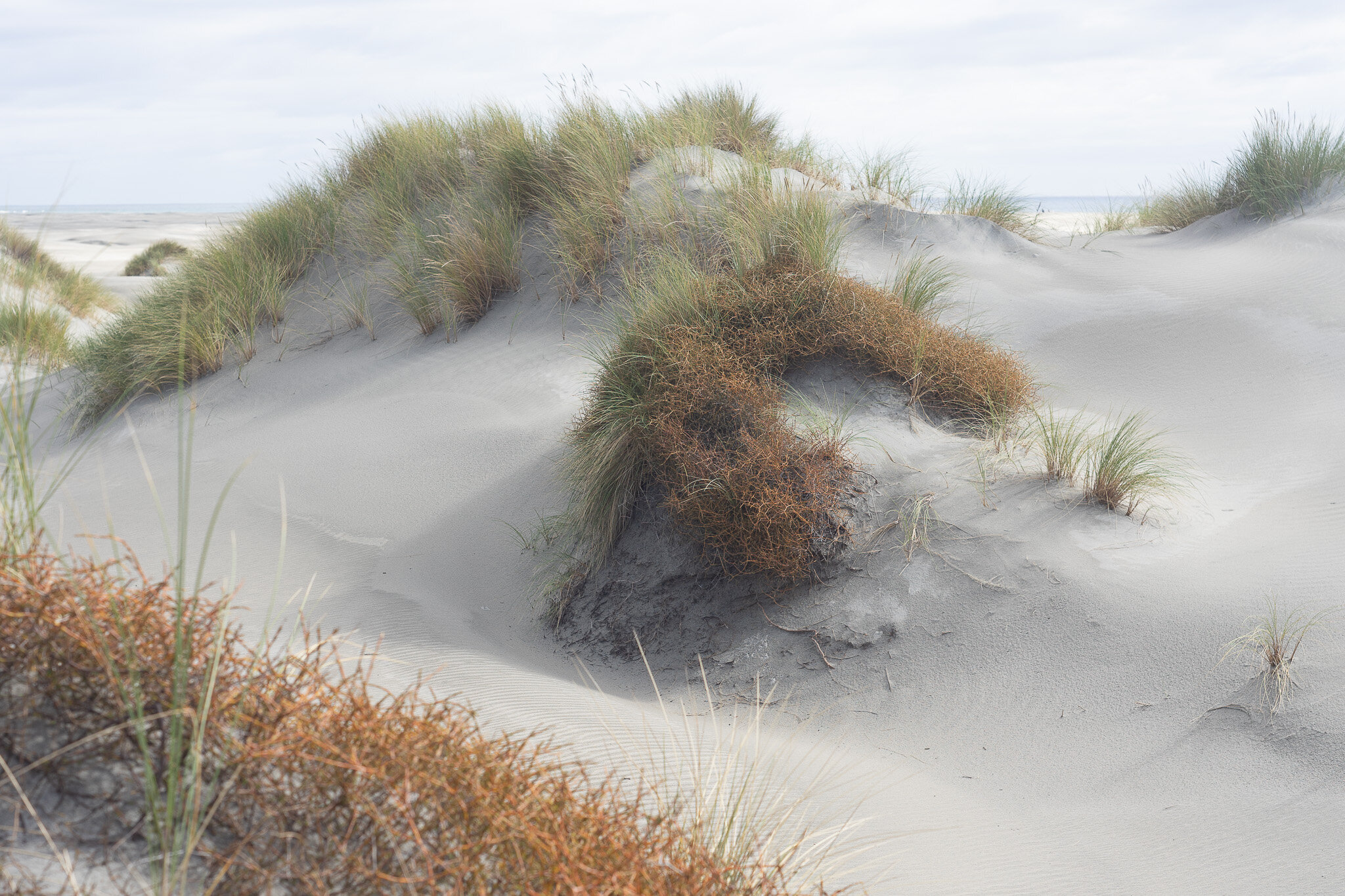Smooth Caramel and Ephemeral Dune Wetlands
Farewell Spit is a place held in the consciousness of most New Zealander’s. This is in part due to its prevalence in maps and the large number of whale strandings that make it into the media. In Te Reo it is called Onetahuai, which translates as ‘heaped up sand’. The European name derives from Captain Cook’s departure from his first voyage, it was the last land he saw before sailing across the Tasman Sea. A rich history of Māori occupation is visible in Pūponga pa which has a commanding view over the spit and the numerous archaeological evidence of camps, middens, moa hunting and waka. Waka carvings were found here early on and Charles Heaphy noted Māori dragging waka over the spit as a shortcut between the West Coast and Golden Bay. It is the longest sandspit in New Zealand forming the northern side of Golden Bay, stretching for about 26 km above sea level and another 6 km underwater. The spit is comprised of fine golden sand, composed of late Cretaceous quartz sandstones (silica). The eroded material of the west coast cliffs and the Southern Alps is carried on sea currents, dumping 4 million cubic metres of sand every year. A few thousands years on from now, it is expected the spit will encircle golden bay forming a giant lagoon.
Apart from sand, the tide also brings in larges quantities of Zostera muelleri/eelgrass which creates interesting little mounds along the tideline. The tidal mudflats extend up to 6 km seaward at low tide which provides a large feeding ground for a plethora of bird species in search of molluscs, crustaceans, marine worms and more. Hundreds of thousands of migratory waders leave the northern-hemisphere tundra, where they have spent the summer with many arriving here. This ecosystem was also a great source of food for Māori. Middens dating from 1600AD contain tuatua, cockle, mudsnail, fish and birds.
The interaction of prevailing winds, golden sand and sun, render a smooth undulating caramel-like surface across the landscape. These undulations over time, move in an easterly direction leaving crescent-shaped lakes and ephemeral wetlands in their wake. In one section pictured, the rare Eleocharis neozelandica (now only known from this location) registers as a thin mat of lime-green/brown in an ephemeral wetland. Eleocharis translated from latin is ‘charm of the swamp’ and the role it plays in the shifting pastel gradient from orange to green, certainly earns it the name. The following picture, in a damp dune-flat, exotic Conyza sumatrensis (broad-leaved fleabane) provides an upright verdant lime-green foreground. Ficinia nodosa (knobby clubrush) forms the background as a swathe of tawny orange, the new growth a brighter tone.
Coprosma acerosa is a tangled prostate shrub, that appears here as humourous orange mounds that hug the dunes. This plant plays an important role in binding sand dunes and feeding native lizards with its translucent, blue flecked fruit. In cultivation, C. acerosa is desirable where low-growth and colour is needed. It prefers drier habitats, shown by its distribution on dune mounds rather than hollows. It can tolerate high temperatures and dry impoverished soils but will fail in harsh frosts and high moisture.












